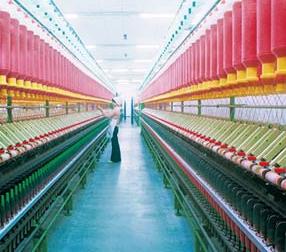According to the monitoring data, as of April 18, the latest average position of the active stock direction was 81.62%, which was a decrease of 1.50 percentage points from the average position of 83.13% in the previous week (April 11). Among them, the initiative to lighten up 0.78 percentage points. Excluding stock-based stocks, the average overall position of partial stocks and balanced stocks was 73.66%, down 1.50 percentage points from the average of 74.67% in the previous week (April 11). Among them, the initiative to lighten up 0.78 percentage points. Kids Bedding Sets,Printed Bedding Sets,Duvet Cover Sets,3D Duvet Sets changxing sanxing textile co.,ltd , https://www.sxhometextile.com
The stock-based position is 85.98%, which is 1.86 percentage points lower than the previous week (April 11). Among them, the initiative to lighten up 0.91 percentage points; partial stock ** positions 76.92%, compared with the previous week decreased by 0.97 percentage points. Among them, the initiative to lighten up 0.58 percentage points; balanced ** position was 69.44%, compared with the previous week, a decrease of 0.71 percentage points. Among them, the initiative to lighten up 0.78 percentage points. The average position of the active stock direction is 81.62%, which is at a medium-high level compared with historical positions.
As of April 18, 84 ** (accounting for 16.8%) positions were below 70%, 122 ** (accounting for 24.4%) positions were between 70%-80%, and 141 ** (accounted for 28.2% Positions between 80% and 90%, and 153** (30.6%) are above 90%. Last week, a total of 19% of the ** initiative to lighten up more than 5 percentage points, 43.6% of the ** initiative to lighten up within 5 percentage points, 21% of the ** initiative to increase within 5 percentage points, 16.4% of the ** initiative to increase 5 More than a percentage point. Last week 62.6% of ** took the initiative to lighten up.
According to calculations, the industries with higher average intensity of replenishment last week were mainly commerce (upgrading intensity was 11.83, the same below), textiles (7.73), papermaking (5.24), and general industry (4.73); last week** The industries with higher average reduction intensity mainly include autos (with a reduction intensity of 8.51, the same below), transportation (7.74), public (7.03), and chemical (5.72) industries.
From the point of view of distribution of intensity of reinforcement, ** has the highest intensity in the business, textile, papermaking, general and agricultural industries, followed by furniture, rubber, agriculture, forestry, beverage, instrumentation, mining and other industries; , P&L, timber, information, integrated, social services, science and technology, culture, education, and other industries have no obvious increase in the intensity of their deployment.
Judging from the increase in the number of **, last week a total of 82.71% of ** added business, 74.20% of ** added textiles, 79.25% of ** added paper, 55.95% of ** increased GM, 56.92 % Of the ** increased allocation of agricultural and sideline, 78.12% of ** increased furniture, 80.11% of ** increased rubber, 58.92% of ** increased allocation of agriculture, 79.28% of ** increased beverage, 88.62% of ** Adding meters, 55.17% of ** increased mining, 62.04% of ** increased printing, 61.42% of ** increased allocation of zero, 74.03% of ** added wood, 50.41% of ** added information, 76.62 The percentage increase of 5% was integrated, 64.24% of ** increased social services, 57.07% of ** increased technology, and 71.19% of ** increased education.
From the perspective of the distribution of the intensity of reduction, the industries with the most obvious reductions are mainly in the industries of automobile, transportation, public utilities, chemistry, food and beverage, food, metals, etc., followed by nonferrous metals, minerals, chemical fiber, special-purpose steel, and iron and steel industries; ** Less obvious reductions in the apparel, petrochemical, construction, electrical, financial, real estate, leather, shipping, pharmaceutical, sports, and other industries.
Judging from the number of deductions, last week a total of 86.25% of **reduction vehicles, 75.56% of **reduction transportation, 84.21% of **reduction utilities, and 79.96% of **reduction chemicals, 82.01% of ** reduced meals, 70.45% of ** reduced foods, 65.04% of ** reduced metal, 70.16% of ** reduced colors, 77.14% of ** reduced minerals, 64.93% of ** Reduction of chemical fiber, 66.54% of ** reduction with dedicated, 73.95% of ** reduction of steel, 67.59% of ** reduction clothing, 56.91% of ** reduction of petrochemical, 68.16% of ** reduction of construction, 60.92 % of ** reduction of electrical distribution, 52.69% of ** reduction of financing, 58.06% of ** reduced allocation of real estate, 73.40% of ** reduced leather, 51.83% of ** reduced delivery, 64.80% of ** With the reduction of medicine, 58.48% of the ** reduced style.